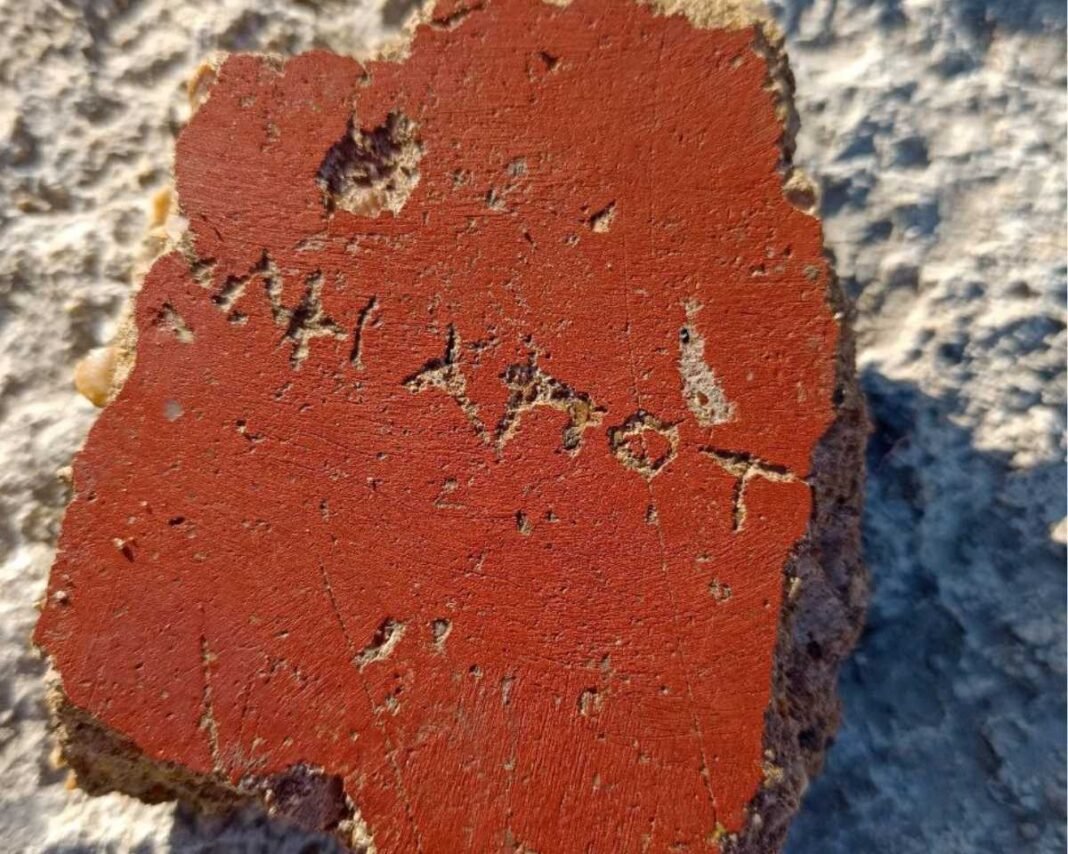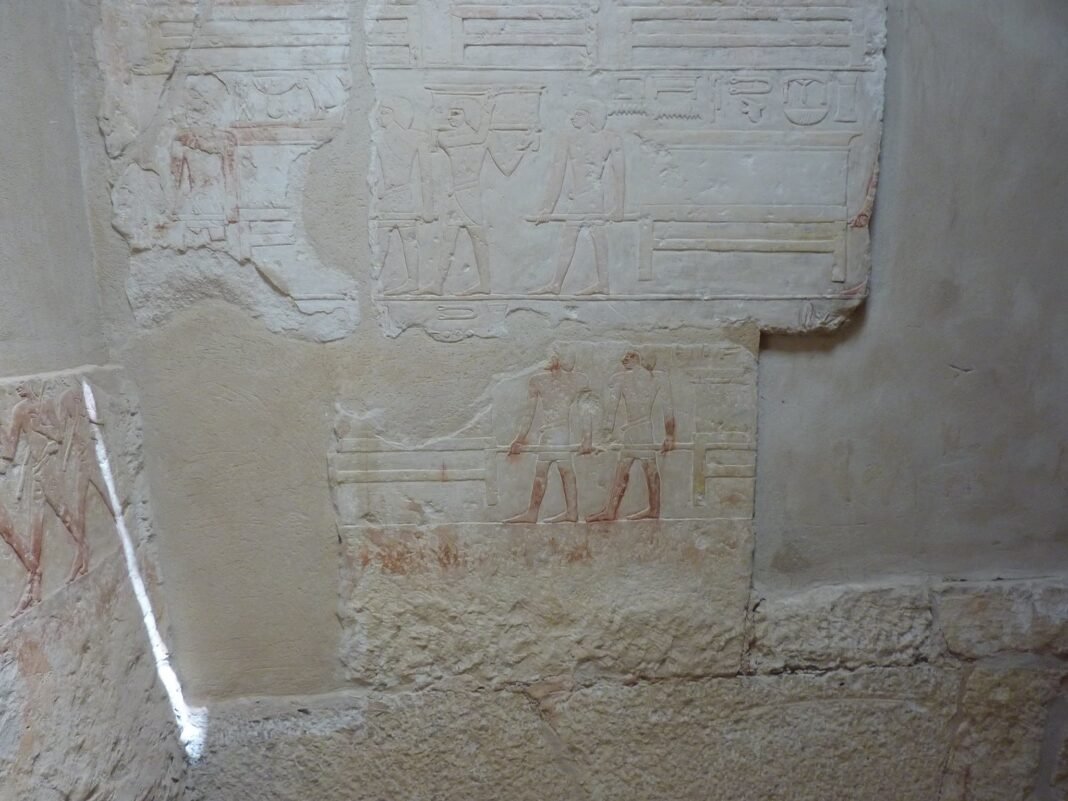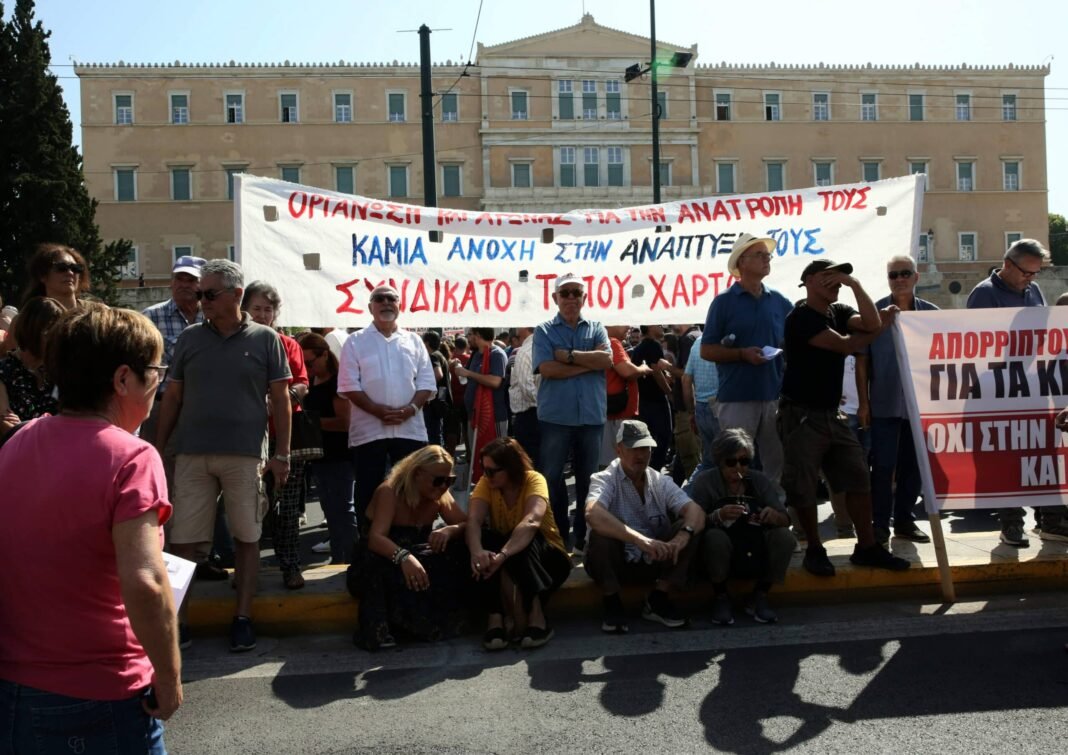
Archaeologists in Crimea have uncovered a rare Greek inscription at the ancient settlement of Artezian, revealing traces of ritual and belief in a region once ruled by the Bosporan Kingdom. The small fragment of graffiti, etched into temple plaster and concealed beneath a large stone slab, was discovered near the altar of the Zeus Genarcha temple.
The faint letters have stirred excitement among researchers. Specialists say the inscription could represent a personal name, a dedication, or a ritual invocation, though its exact meaning remains uncertain. What is clear is that the fragment was deliberately hidden, hinting at its potential religious or symbolic purpose.
A rare survival from ancient worship
Researchers call it an unusual find, explaining that inscriptions on wall plaster seldom survive, especially in sanctuaries. The discovery adds a personal voice to ancient worship, suggesting that someone inscribed the message — whether as a prayer, plea, or charm — before concealing it for reasons now lost to time.
Ancient Artezian and its long history
Artezian, also spelled “Artesian,” lies in the Leninsky district of the Kerch Peninsula, about three miles from the Sea of Azov. The site evolved from a Greek-influenced settlement into a fortified stronghold that flourished from the 6th century B.C. through late antiquity.
Excavations have been underway since 1988, revealing more than 860 ritual and burial pits and uncovering evidence of a culturally diverse community blending Greek, Thracian, and Sarmatian traditions.
A city shaped by conflict and resilience
Artezian’s history was marked by both prosperity and destruction. Archaeologists found traces of a massive fire in the mid-1st century A.D., likely tied to the Roman-Bosporan war between 42 and 49 A.D. The conflict, involving Roman forces and supporters of Mithridates III, left behind a layer of ash and debris that sealed much of the site’s history beneath it.
Ritual horse sacrifice adds a new dimension
This season’s excavations produced more than the inscription. In one of the sacrificial pits, researchers uncovered the dismembered remains of a young stallion connected to a high-status burial.
The horse’s skull and upper limbs were arranged in an oval pit about 28 inches deep and covered with ash, suggesting a ritual act, possibly linked to beliefs in rebirth and renewal.
Faith, secrecy, and symbolism intertwined
The combination of hidden writing, ritual sacrifice, and funerary offerings paints a vivid picture of Artezian’s spiritual landscape. Each discovery — from cryptic graffiti to sacrificial remains — contributes to a deeper understanding of how religion, writing, and social power intersected on the ancient Black Sea frontier.
For archaeologists, the meaning of the inscription remains an open puzzle. Yet, its discovery, alongside the evidence of ritual and death, reveals that Artezian was far more than a provincial outpost. It was a place where faith, secrecy, and symbolism converged — leaving behind clues that continue to speak across two millennia.


